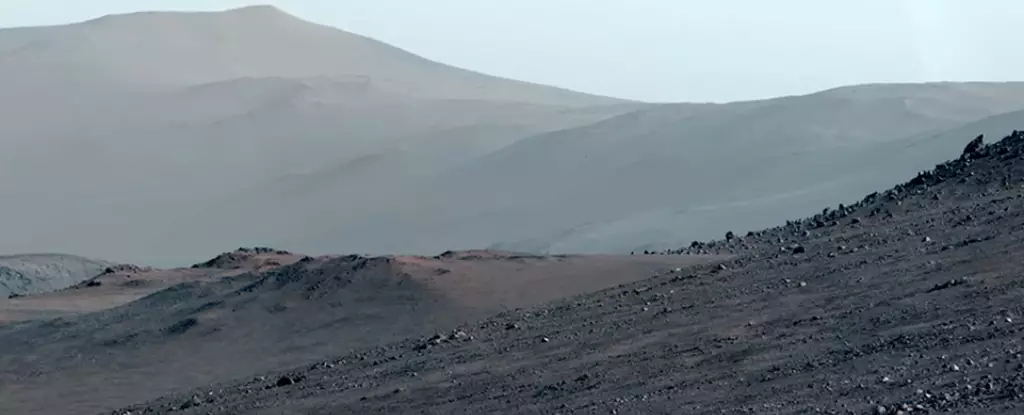In a groundbreaking decision by NASA mission planners in 2018, Jezero Crater was chosen as the landing site for the Perseverance rover, marking a significant advancement in the quest to uncover the mysteries of Mars. Situated in a region that once nurtured an ancient lake, the crater offers a unique geological narrative evidenced by the delta fan at its western margin. These formations, akin to what we find on Earth, serve as indicators of past environments rich in flowing water, suggesting a wet history that raises tantalizing questions about the potential for life beyond our planet.
The existence of the delta fan, rich in clay minerals, positions Jezero Crater as a prime target for astrobiological research. It promises to unlock vital clues regarding Martian history, including the potential for biosignatures—traces of ancient life that could enhance our understanding of the planet’s past and of life itself.
In recent developments, NASA reported that Perseverance has successfully reached Lookout Hill, a vantage point on the crater’s rim. This ascent, which took approximately three and a half months, involved the rover climbing 500 vertical meters (1,640 feet), carefully navigating a landscape fraught with challenges. This accomplishment is not merely a feat of engineering but a foundational moment for the mission, as Perseverance prepares to embark on its Northern Rim campaign, a new phase designed to delve deeper into Martian history.
Throughout its journey since landing in February 2021, Perseverance has successfully executed four distinct science campaigns. These campaigns have focused on various geological and atmospheric features, including sediment samples and analyses aimed at uncovering the environmental conditions that prevailed in Jezero Crater.
The fifth campaign, dubbed the Northern Rim, holds particular excitement for scientists, as it will lead the rover through a region that promises new geological insights. According to Ken Farley, the project scientist for Perseverance at Caltech, this transition to the Northern Rim signifies a historic moment. The rover will investigate rocks that compose the crater rim, originating from deep within Mars’ crust and shaped by an impact event that occurred around 3.9 billion years ago. The geological context of these rocks is crucial, as they may harbor information about the planet’s formative years and could share historical parallels with Earth’s early geological activities.
As Perseverance advances, it approaches Witch Hazel Hill—an outcrop revealing over 100 meters (330 feet) of layered rock formations. Each layer represents distinct periods in Martian geological history, akin to pages from a book chronicling the planet’s environmental evolution. Candice Bedford, a scientist on the team, articulated the excitement around this exploration, emphasizing the potential to uncover ancient environments encapsulated within these layers.
The route ahead for Perseverance is as intriguing as it is ambitious. After surveying Witch Hazel Hill, the rover plans to venture toward Lac de Charmes, an area believed to be less affected by the impact that formed Jezero Crater. This region may reveal pristine geological features that offer insights into Mars’ ancient environments, possibly less altered by external cataclysmic events.
Subsequently, the rover will traverse back up the crater rim to examine megabreccia—blocks of ancient bedrock that may provide evidence of another ancient impact event, the Isidis impact, which significantly reshaped Mars’ surface landscape. Understanding these geological formations could shed light on the Noachian Period, an era characterized by robust hydrological activity and volcanic activity, indicating a geologically dynamic Mars.
Ultimately, the undercurrent driving Perseverance’s exploration remains the quest for biosignatures. The rover’s scientific objectives focus on this “warmer, wetter” epoch to ascertain whether conditions may have once been suitable for life, mirroring the early Earth. The revelations from Perseverance could alter our perception of Mars from a barren wasteland to a potential cradle for life, offering tantalizing prospects for the future exploration of our neighboring planet.
The progress of the Perseverance mission not only represents a technical triumph but also embodies humanity’s enduring curiosity about life in the cosmos. As NASA prepares to unveil further discoveries, the mission exemplifies our relentless pursuit of knowledge about the universe and our place within it. The challenges overridden by the rover, as highlighted by Steven Lee, the deputy project manager, underscore the robust innovation driving planetary exploration in the 21st century. With each discovery, we inch closer to unraveling the secrets of Mars, truly enriching our understanding of worlds beyond Earth.


Leave a Reply